Shooting Film With a Kodak Aero-Ektar in 2021
21/03/2021
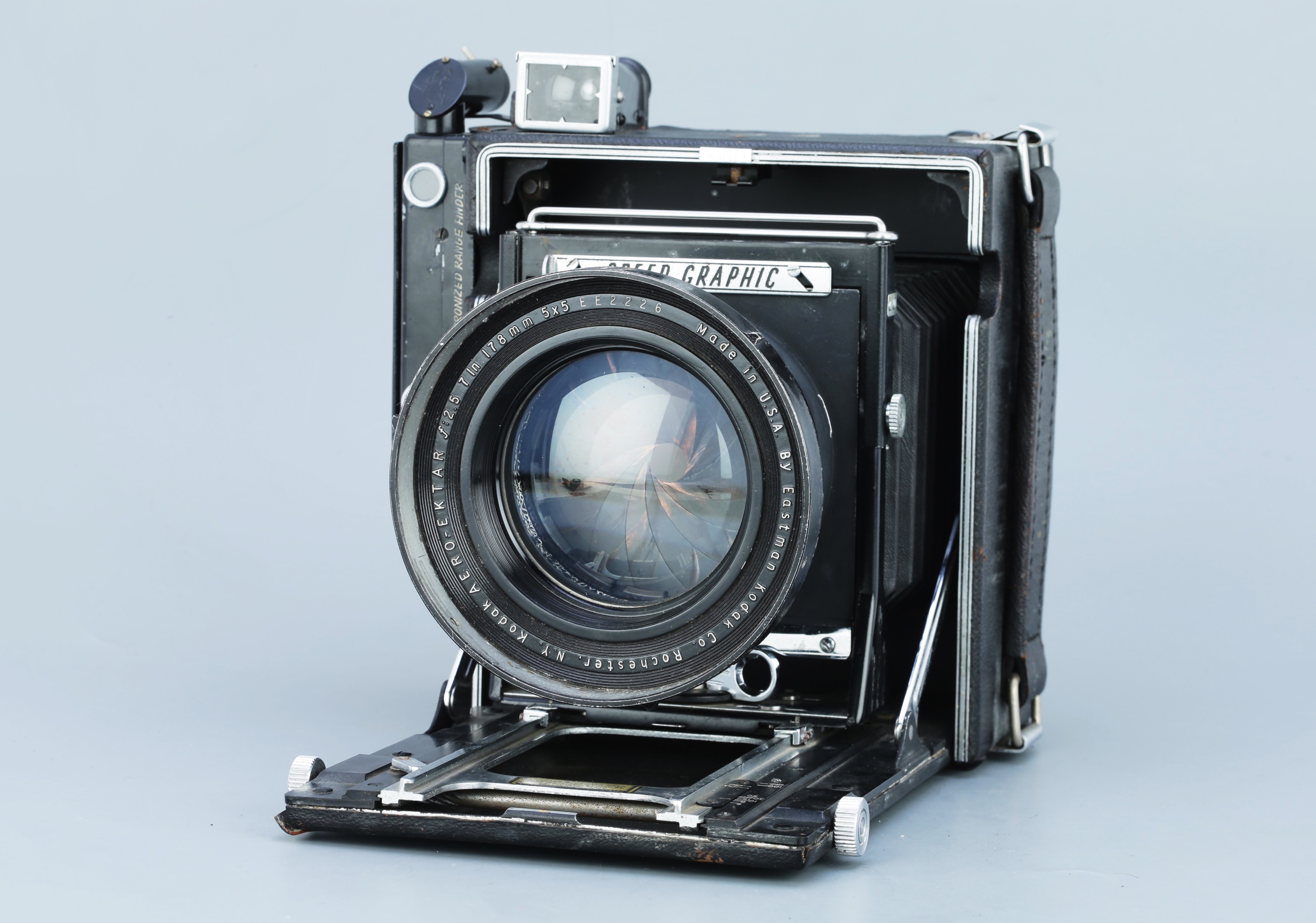
The Kodak Aero-Ektar 7" (178mm) f/2.5 large format lens. Seen here mounted on a 4x5 Speed Graphic.
Shooting Film With a Kodak Aero-Ektar in 2021
The Kodak Aero-Ektar is an extremely large lens. It was designed for the U.S. Air Force and that is why the lens is quite fast for a large format lens. Taking aerial surveillance photographs on large format roll film for nighttime reconnaissance missions was precisely what it was designed for.
This Aero-Ektar is of the 7" variety (or 178mm in metric) which makes it a 48mm lens on 35mm format cameras, give or take. What's far more astounding though, is the maximum aperture achievable. ⨍/2.5. This renders the depth of field very shallow and calculates to be ⨍/0.68 in 35mm terms. We will talk about focusing on the field later on. It stops down to ⨍/16, but no one is shooting this lens stopped down, there are far more practical lenses out there that will do a much better job and weigh a fraction of the Aero-Ektar's bulk.
This lens will be available, along with the Speed Graphic as lot number 450 in the Cameras, Scientific & Collectables auction at Flints on the 25th of March 09:30 GMT.
This lens will be available, along with the Speed Graphic as lot number 450 in the Cameras, Scientific & Collectables auction at Flints on the 25th of March 09:30 GMT.
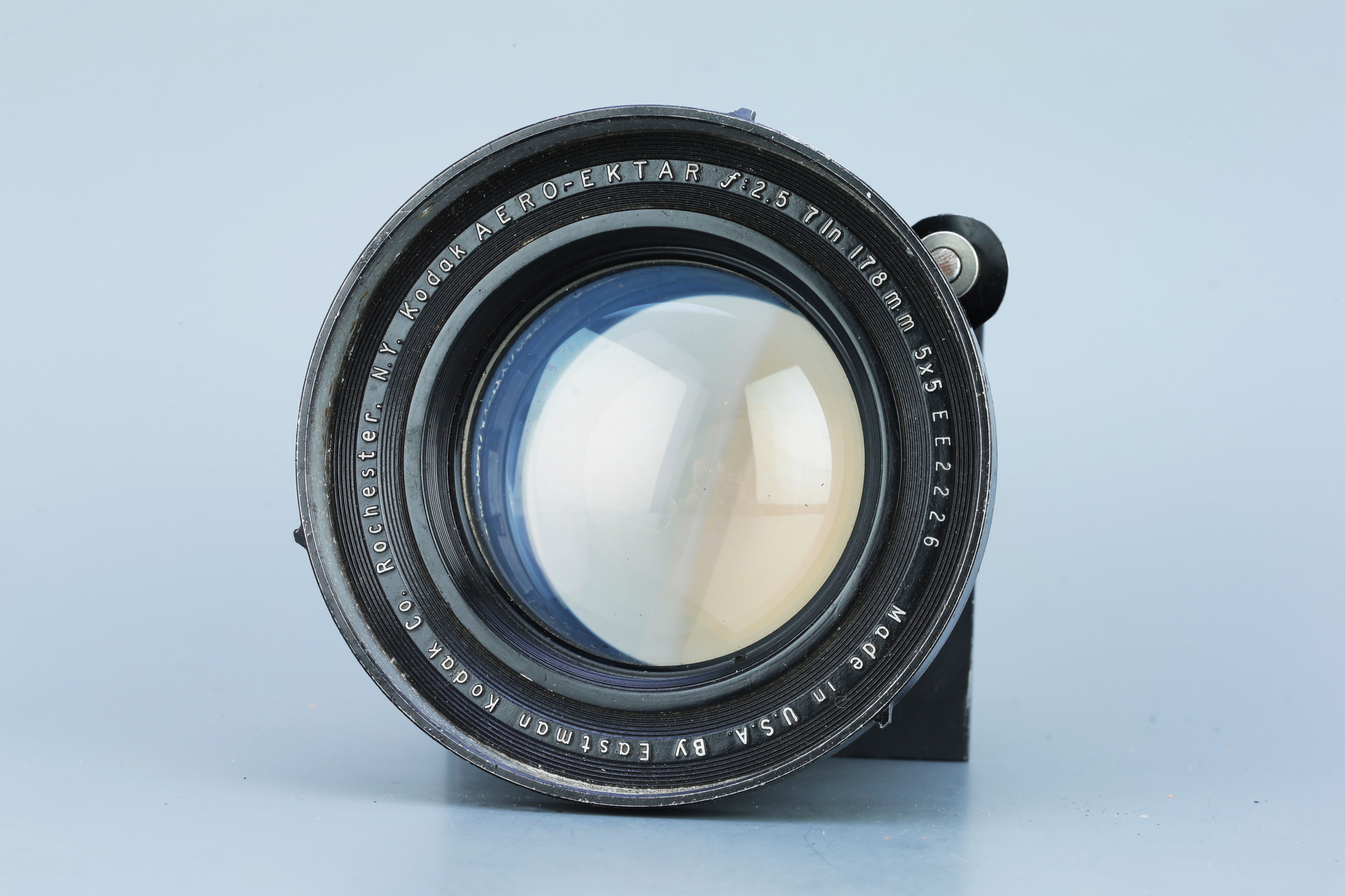
The Aero-Ektar with aperture blades opened fully.
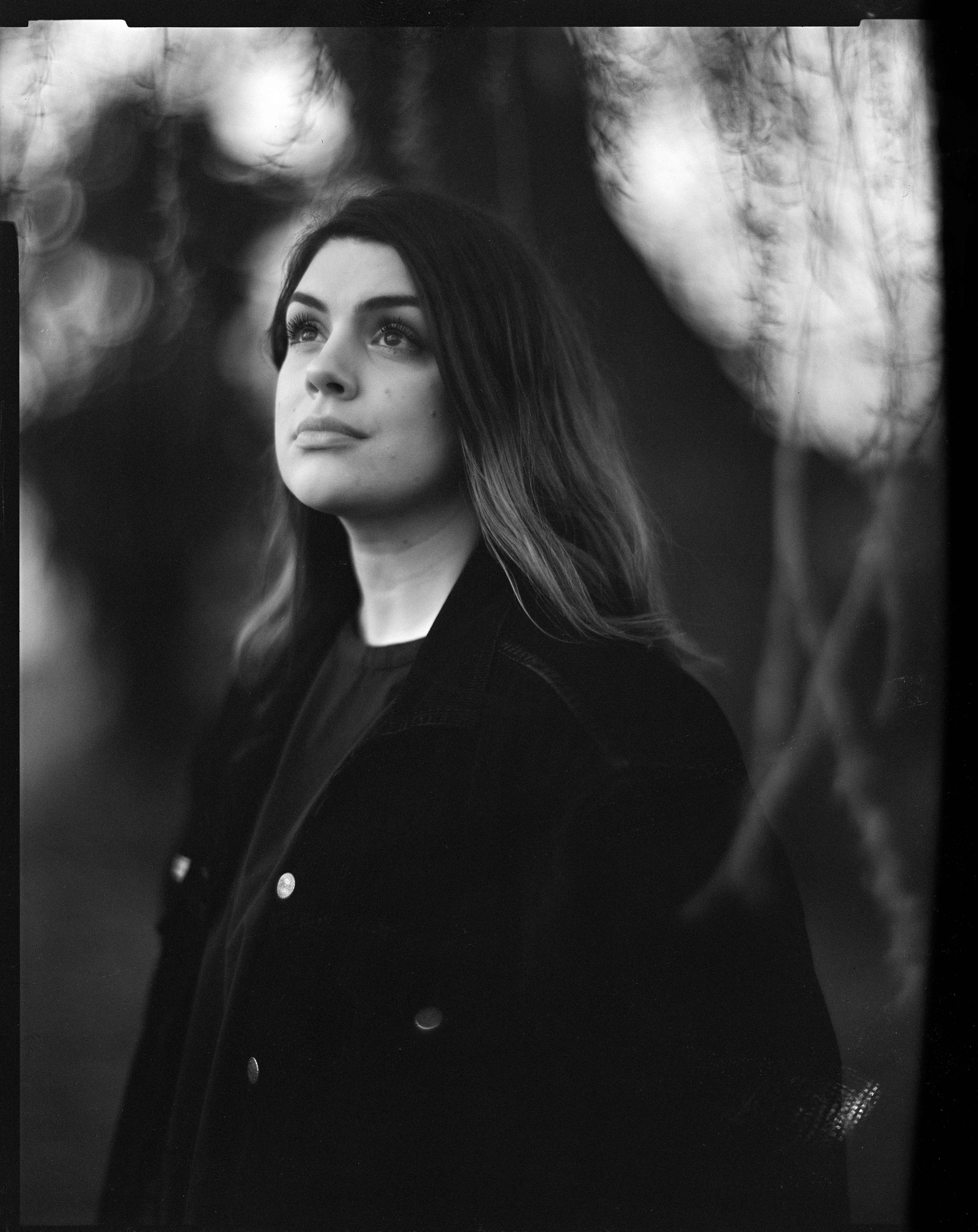
A portrait, taken wide open using the Aero-Ektar on the Speed Graphic, the exact one that will be sold with this lens.
Few ways exist to fully take advantage of this lens in modern-day circumstances. With a lot of faffing about you can mount it to things like the Fujifilm GFX or other digital MF setup, but there would be a huge crop factor to consider.
To take full advantage of the Ektar's characteristics, a 4x5 format camera will be required (I've also heard it will cover the 5x7 format too) and that means shooting film. It also means doing away with essentially every modern convenience conceivable, making shooting with the Aero-Ektar almost ritualistic in nature. Methodical, measured, conscientious.
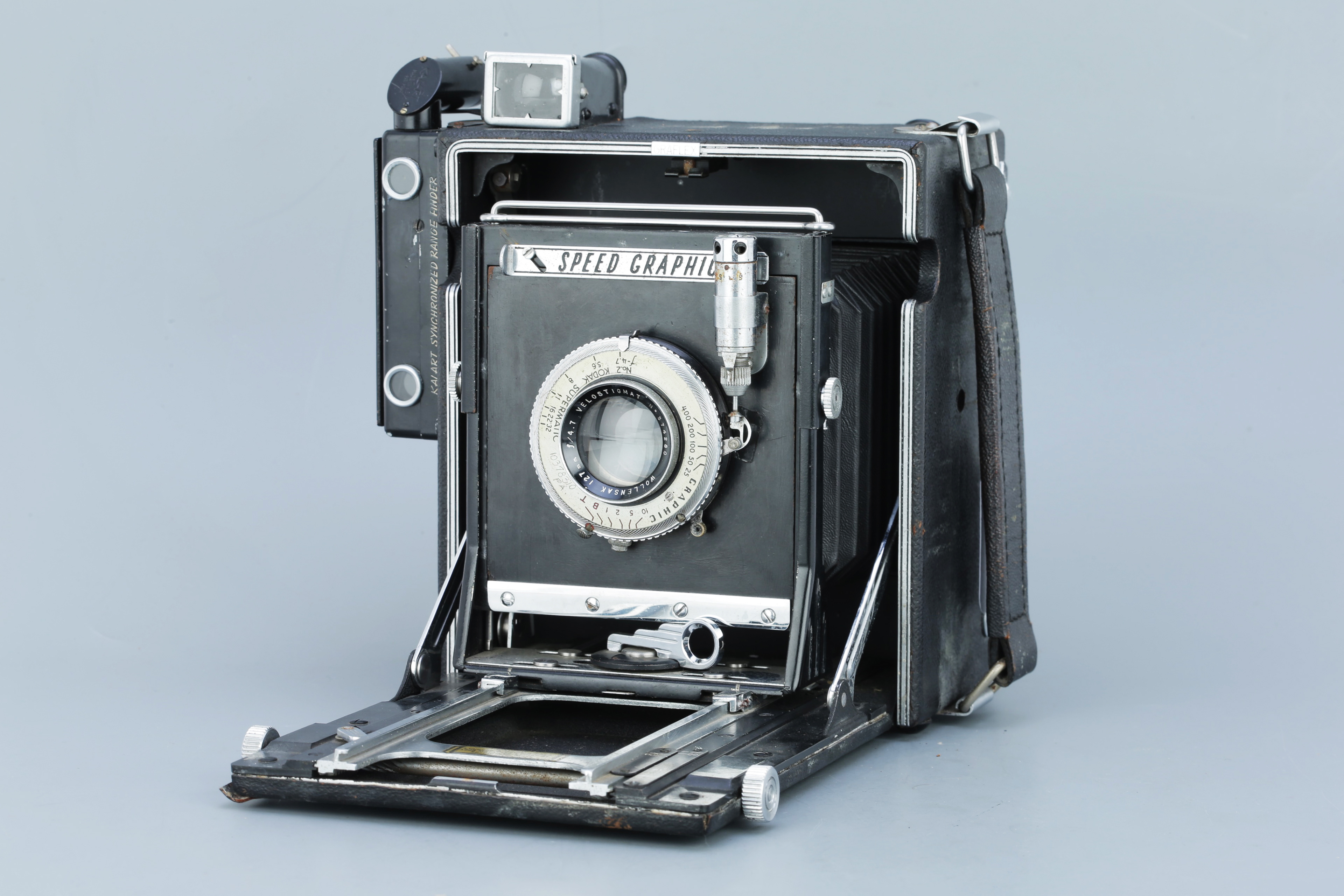
The Speed Graphic is a singular name that is applied to a range of press-style medium and large format cameras. Ranging from baby-Graphics that shoot 120 film, right the way up to 5x7, although these are exceedingly rare. The Speed Graphic I used was of the 4x5 persuasion, with a side-mounted Kalart rangefinder and ground glass designed to accept film holder such as the fidelity series of DDS (which is what I used, and they're really good. I prefer them to the risky wooden ones any day of the week. I've been brutally betrayed at the worst possible of times by the wooden ones in days past).
The front end is capable of movement but the rear is fixed. What makes this camera an ideal candidate for the Ektar is that is has a built-in focal-plane shutter. What's quite astounding is that the curtain is big enough to cover the entire 4x5 image area, and can also achieve shutter speeds of up to 1/1000 of a second. The Ektar does not have a built-in shutter, as most large format lenses do, so a camera with a built-in focal plane shutter must be used to circumnavigate this issue. The shutter system in the Speed Graphic is a clockwork mechanism that requires a complete revolution of the winding lever to change the shutter speed and charge the curtain. As the curtain is wound the user can see it is constructed as one continuous blind with depreciating sized slits cut out. Like a giant blackout blind with several different sized horizontal gaps removed. A second, smaller, winding nob, acts as a tension multiplier to speed up or slow down the speed of the curtain aperture passing, giving rise to even more shutter speeds, a bit like the front and rear gear system on a bicycle. The camera has a range of shutter speeds from 1/10 to 1/1000 of a second plus T.
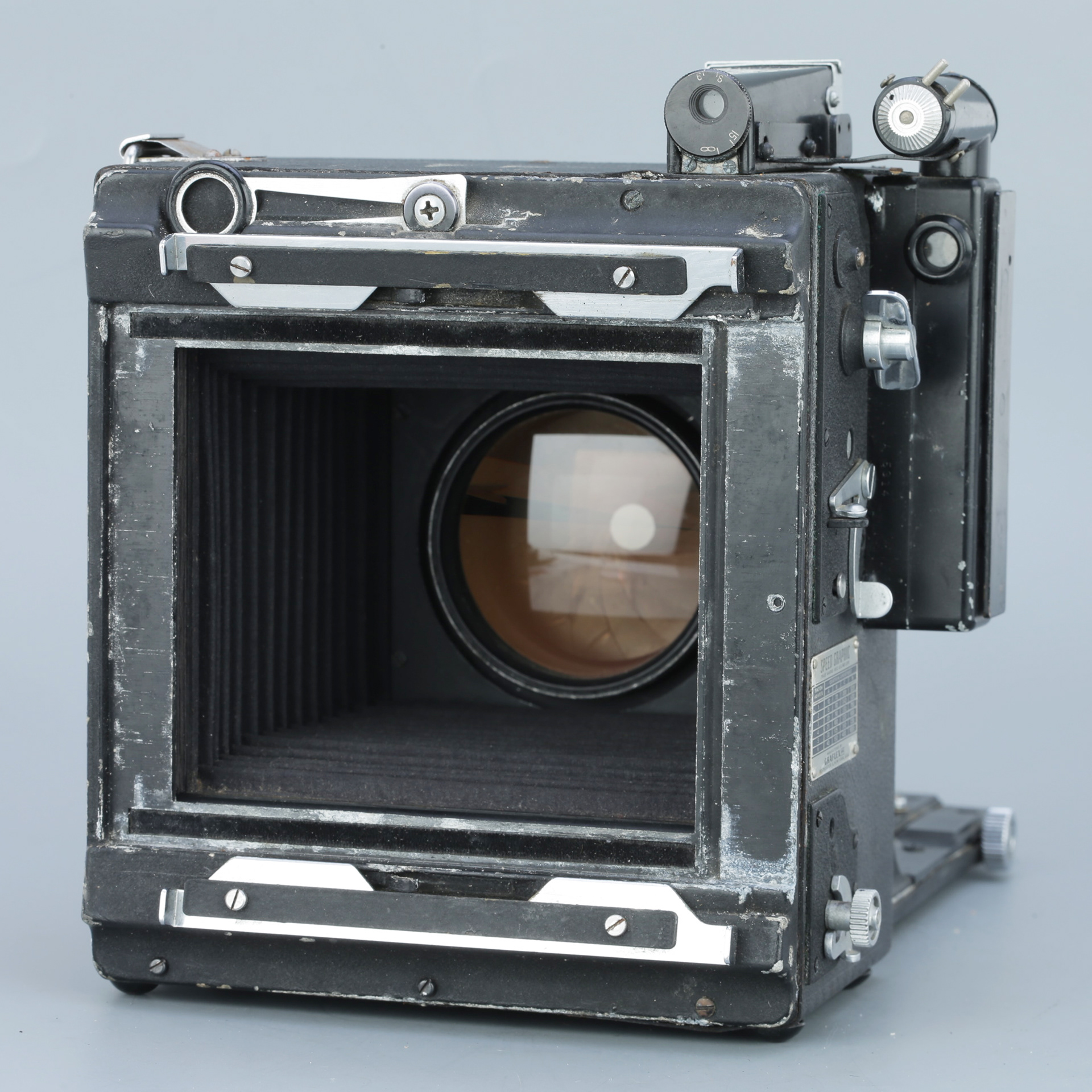
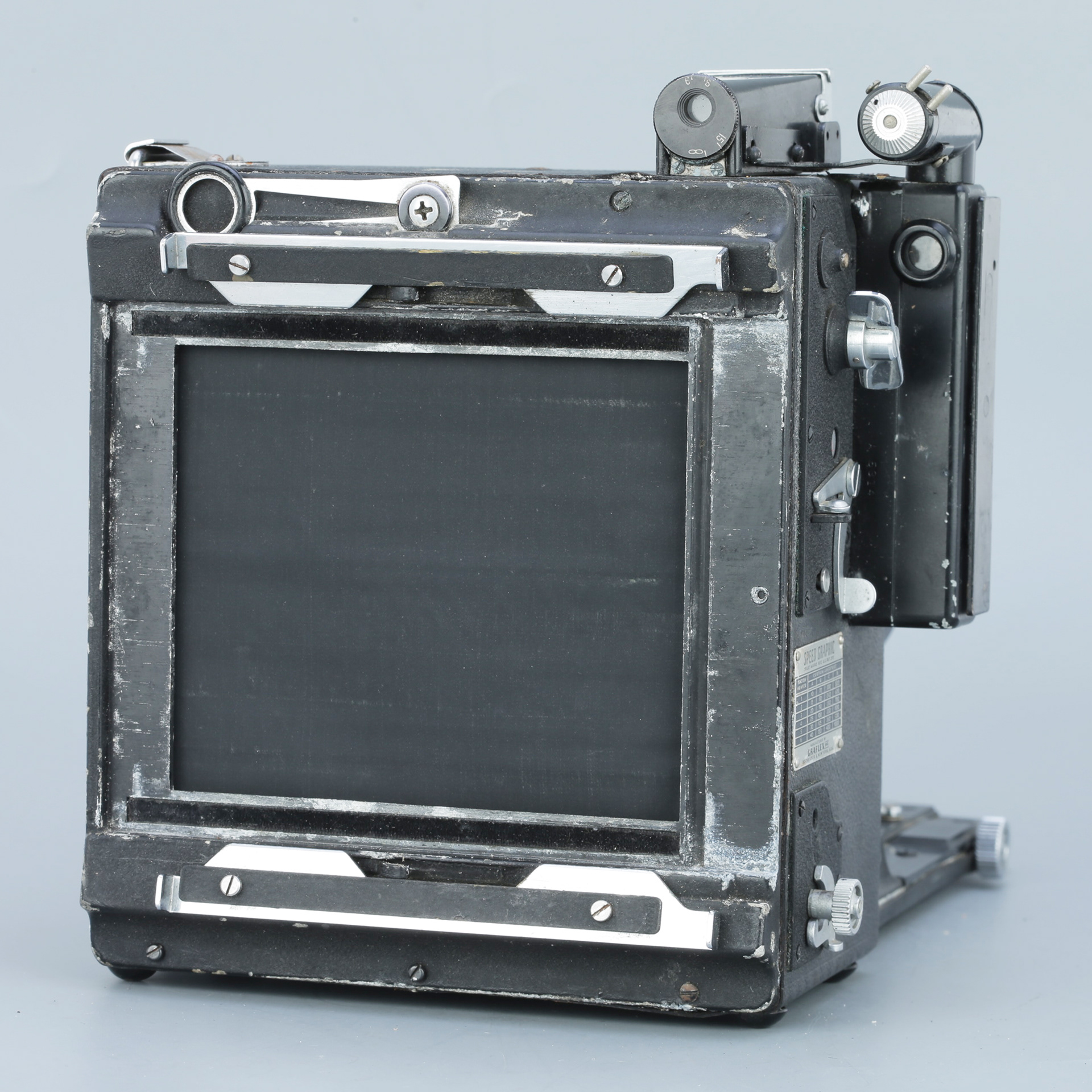
The Ektar can just about be mounted to a lens board suitable for the Speed Graphic and away we go. It's really quite heavy on the front so take care when using the setup. It's strong enough but wouldn't take a drop or fall.
Due to the nature of cameras with rails and bellows, the lens can be focussed down to a great deal of magnification. I wouldn't like to say what the minimum focus distance is on this Speed Graphic / Ektar combination due to the camera being around 80 years old. Note that when the bellows extension is increased, the volume of light decreases despite the shutter speed and aperture remaining the same values. This fall-off will need to be anticipated and taken into account when metering.
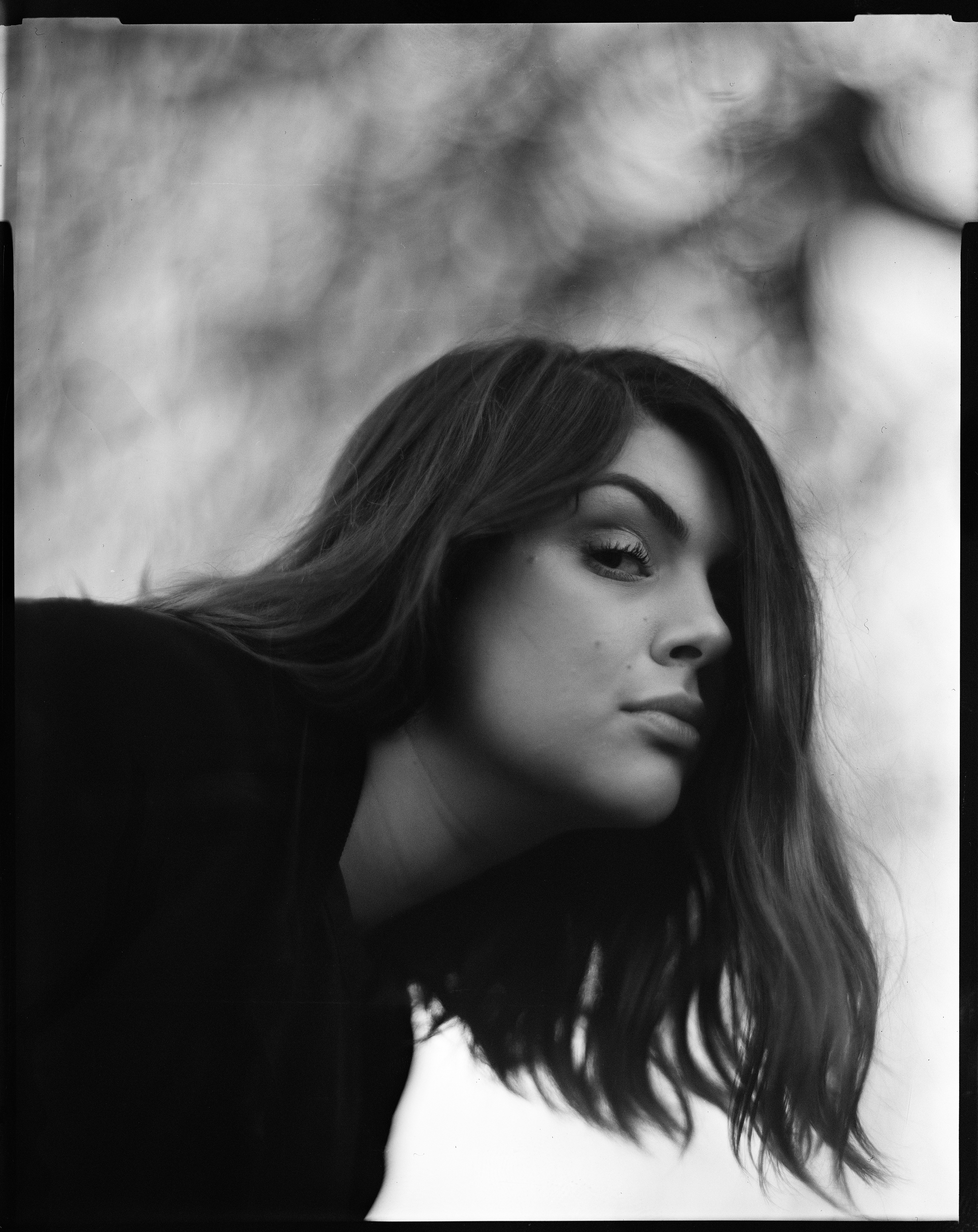
Getting quality results on the Aero takes a little bit of practice as the Speed Graphic handles poorly when compared to modern cameras. (in my opinion, at least). I had to take it out for a spin several times before I got the hang of it and stopped making mistakes.
First up, we have to load our film into the film holders, one on each side. To keep it brief, a notch in the top right corner tells you that the emulsion is facing you. The emulsion side needs to face outwards towards the subject from the film holder when the dark slide is removed. Tip: Open and close a film holder in daylight to understand how it works, and what features it has to help you work with it in the dark or a dark-bag.
Get a sturdy tripod. The bigger the better. Just to take the weight and dampen any unwanted vibrations. The Ektar and the Graphic are both heavy in their own right, and together they are quite unwieldy. To add to the difficulty, the Kalart rangefinder and range guide on the rail are calibrated for the Kodak 127 / 4.7 that usually accompanies the camera, so your only choice is to use a tripod and the ground glass for accurate focusing.
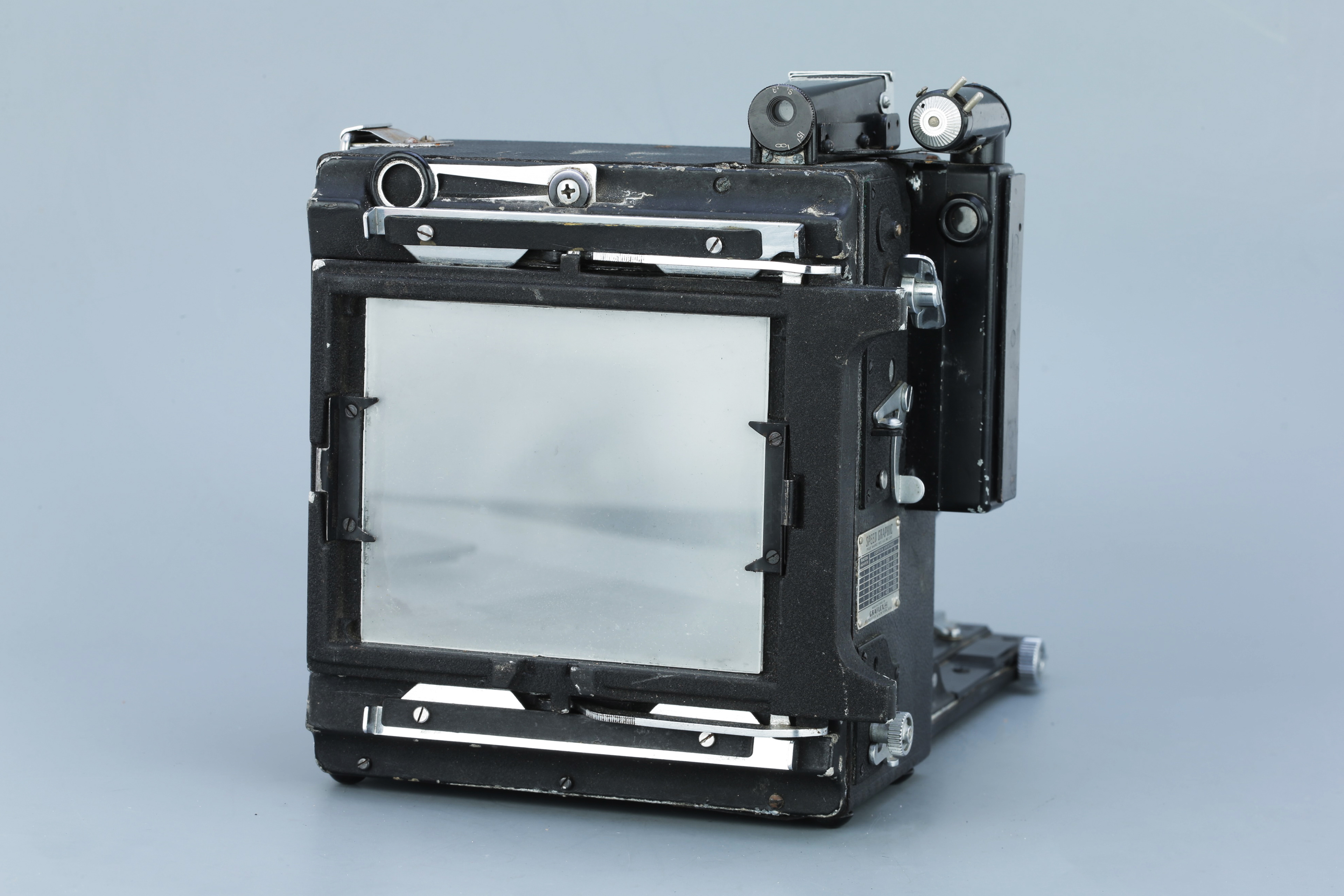
Working with a heavy-duty tripod means that focussing with this extremely fast lens can be achieved with the use of a dark hood and ground glass. The image seen with the lens wide open on the matte is quite bright, even more so in favourable light when compared to the image of other lenses I have seen.
One issue to consider is having your subject remain still for the entirety of the time from the moment focus is achieved to the moment the film holder is loaded into the camera, shutter wound to desired shutter speed, dark slide removed, and finally shutter released. You have to wind it after you've focused as winding blacks out the ground glass. If you're not well practised, this process can be as long as 30 seconds and is quite disruptive.
Once you have completed these steps and replaced the dark slide (the other way round so you know that that frame is now shot) that shot is safe and ready to bring back to the lab, be it yours or another. Well, after the other sheets have been shot of course.
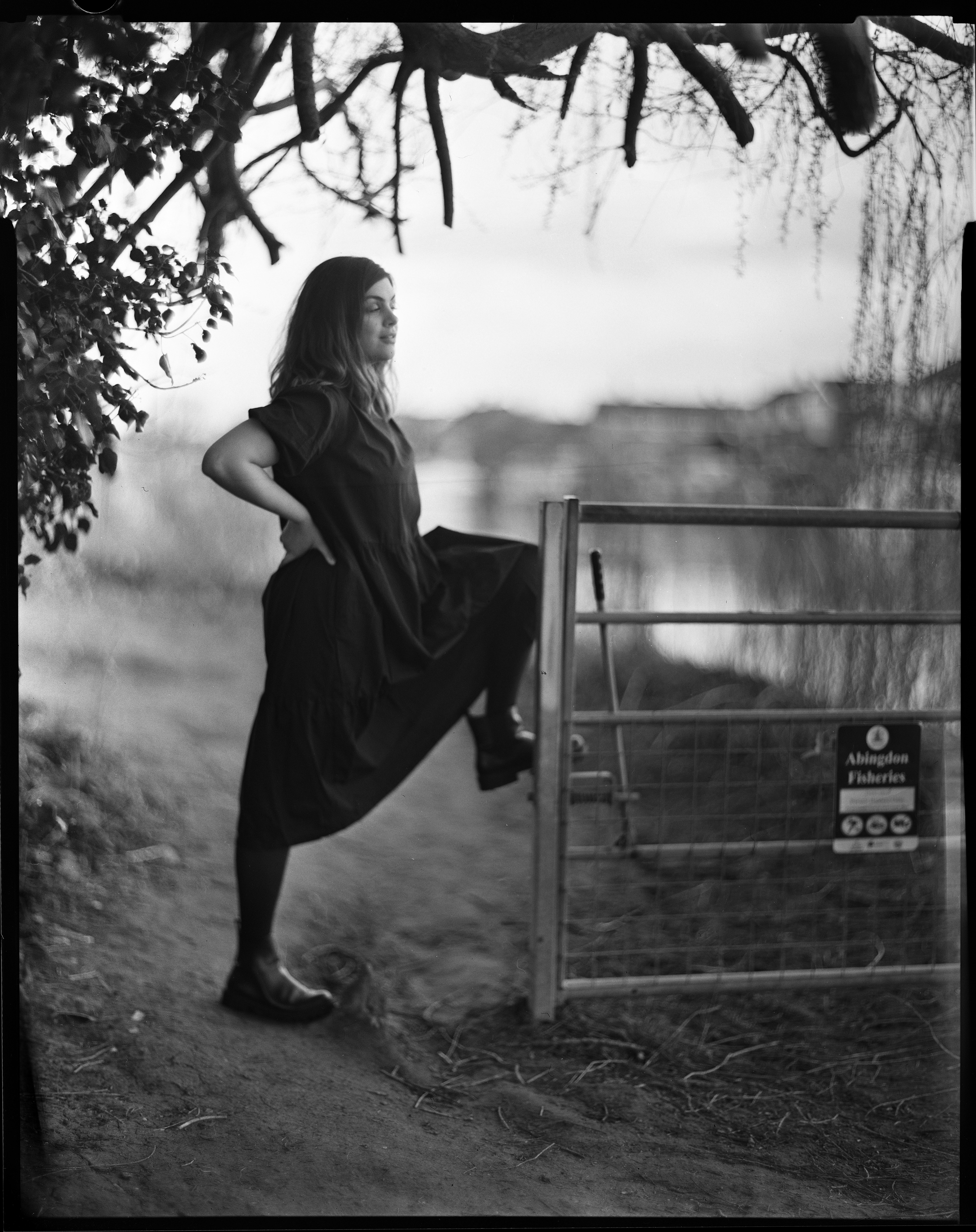
The results are worth the effort. The depth of field is astoundingly shallow (⨍/0.68 in 35mm terms) and can render portraits in an ethereal and dream-like aesthetic that is extremely desirable. The transition into the plane of focus is sublime and the bokeh renders out of focus points of light in a charismatic way. Sharpness isn't too much of an issue, it is so fast that it is always going to be hard to tell what is and isn't in focus. Upon inspection of the results, I am more than satisfied with the sharpness and contrast of the lens, especially considering its speed and its age.
Overall the Aero-Ektar 7" ⨍/2.5 is a beautiful lens and helps create images that are utterly stunning and positively unique. I will definitely look to shoot with this combination again in the future, especially for editorial and large print work, as the quality of 4x5 negatives, when properly made, are divine.